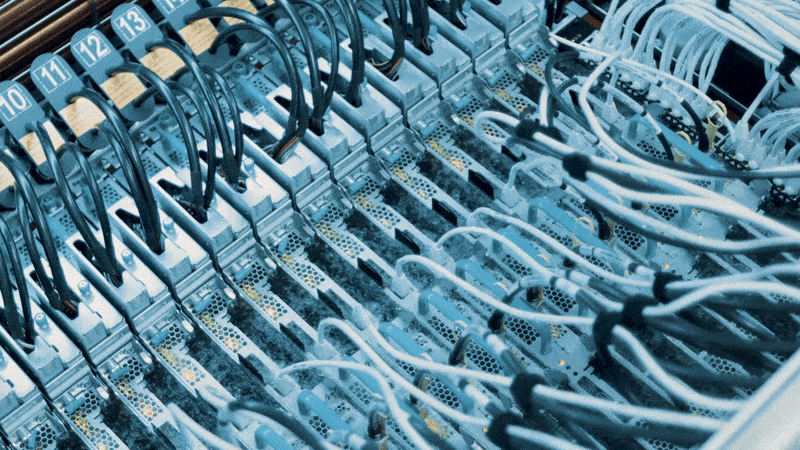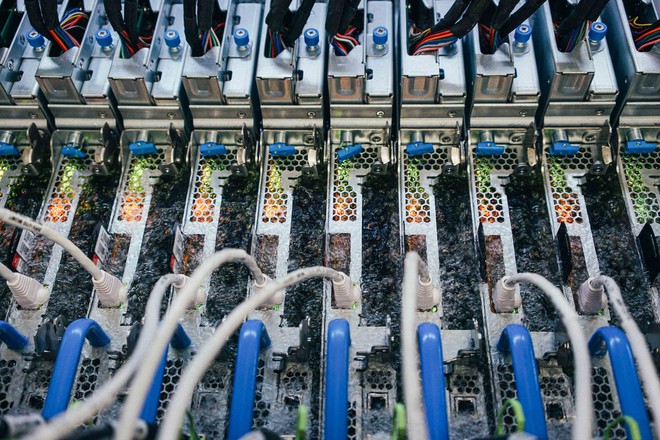After dropping the data center to the sea floor, Microsoft now even soaked the server in liquid to dissipate heat
- Tram Ho
In the past, Microsoft has successfully experimented with submerging data center blocks to the bottom of the sea, and now they want to go even further by dipping their servers into liquids. A series of servers were immersed in the liquid tank while still running. The purpose is nothing more than to improve the efficiency and energy efficiency of the system.
Although the use of liquid cooling for this server has been in use for several years now, Microsoft still claims to be ” the first cloud provider to operate a two-stage embedded cooling system in production environments.” . ”

The liquid heatsinks as if it is boiling when the servers are embedded in it
Microsoft’s cooling system allows the entire array of servers to be completely immersed in a special non-conductive liquid using a FluoroCarbon derivative. It directly removes heat from contact with the parts and quickly boils at a temperature of only 50 degrees Celsius. It is then condensed and returned to the radiator tank in the form of a drip.
This creates a closed heat dissipation cycle, reducing operating costs as well as energy when there is no need to move liquids in the piping system into the tank, and no cooling sheet is required to condense. this liquid.
In recent years, this type of liquid heatsink has been used by cryptocurrency miners to mine Bitcoin and other cryptocurrencies. It has inspired Microsoft to experiment with its use over the past few years, as demand for cloud computing and heavy applications such as machine learning has increased dramatically.

Currently most data centers are being air-cooled – use the outside air and cool it below 35 ° C before blowing it into the system. Although easy to deploy, it uses a lot of water in the process of operation. The new liquid cooling technique is designed to minimize water usage, while ensuring the performance level and durability of components in the server.
A few months ago, Microsoft also completed Project Natick with the trial of placing a data center on the bottom of the Scottish Sea, with 864 servers capable of storing 27.6 Petabytes of data. This test was successful with a failure rate of only 1/8 of that of land-based data centers. But with the test of immersing the server in a liquid tank, Microsoft has even set the goal even higher.

With the new heat dissipation method, Microsoft hopes to lower the failure rate of the device even lower
” What we expect is the same with liquid cooling, because liquid will take the place of oxygen and vapor, ” said Christian Belady, Microsoft vice president of the Advanced Data Center Technology Development Group. humidity, the things that cause corrosion… and those are the things that cause failure in the system . ”
In addition to minimizing spoilage, these tests are part of an effort to fulfill Microsoft’s commitment to reducing water consumption. Not only is it trying to save water usage, but Microsoft is also using systems that collect rainwater or condensate in air conditioners. In 2019 alone, Microsoft collected nearly 8 million cubic meters of water from urban and local systems.
Refer to The Verge
Source : Genk
